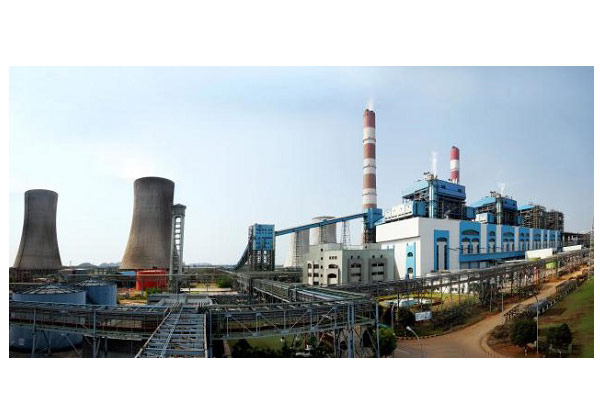
by Revendra
The emergence of Andhra Pradesh as a power surplus state is a testament to the cooperation between the Union and State governments.
The AP Reorganisation Act – 2014 put the state of Andhra Pradesh at a huge disadvantage with its provisions that favoured more power supply to the state of Telangana. As a result, the state faced a capacity loss of 1,142 megawatts (MW) and an annual energy shortage of 8,700 mega units (MU). After the reorganisation of Andhra Pradesh, the state had a total generation capacity of 8,307 MW (as per power allocation), 6.9% of energy deficit and 17.6% of peak deficit units.
The major thermal power stations (Dr. N. Tata Rao TPS, Rayalaseema TPS, and Simhadri TPS) had coal stocks lower than the specified critical levels, not lasting for more than a day. The finances of the DISCOMS too did not look encouraging. The higher purchase power agreements rate and lower power tariffs led to a debt of Rs. 11,000 crores, and the capital expenditure loans and bond-related liabilities came to about Rs. 3,700 crores to the DISCOMS. The interests on these debts burden the DISCOMS with Rs. 330 crores annually. Lastly, the average per unit price was around Rs. 7.30, burdening both consumers, and the government.
Energy resources
Andhra Pradesh has negligible sources of non-renewable energy. No coal deposits exist, and the crude oil and natural gas reserves are estimated at 13.19 million tonnes and 48.44 billion cubic meters respectively. Though the sources of renewable energy estimated at 54,916MW, look promising, only 2192.6MW of this electricity produced is connected to the grid. Thus, the infrastructure is not available to harness renewable energy to produce electricity for consumption in the state.
Power for All
In addition to the lack of energy resources ailing DISCOMs and the poor state of power sector, the growing energy and peak demand are estimated to be 82,392 MU and 13,436 MW respectively by FY2018–19. Together, these issues presented significant challenges to put the State’s power sector back on track. Without dodging a bullet, both the State and Union governments got to the bottom of the issues, and jointly came up with the “Power for All” initiative to provide reliable 24×7 power to the domestic, industrial and commercial consumers, supply 9 hours per day of electricity to the agricultural consumers, electrification of all unconnected households, augmentation of generation and distribution capacity to meet the projected demand, and keep the transmission and distribution losses to a minimum.
This ambitious “Power for All” initiative requires resolve and a systematic approach from both governments to ensure fuel resources for thermal and gas-based power plants, electrification of all households in the state, and the financial turnaround of the DISCOMs.
The first challenge is to address the unavailability of energy or fuel resources. In the last two years, the coal supply to power plants has significantly improved with the coal stocks’ availability ranging from 2 weeks to 2 months of consumption per power plant. Additionally, coal reserves of approximately 930 million tonnes were allotted to the Government of Andhra Pradesh. The domestic coal suppliers have certain constraints to match the demand of thermal power plants in Andhra Pradesh. Keeping this in mind, Andhra Pradesh is permitted to import coal stocks of 3-5 metric tonnes per annum till 2019. The LNG fuel is available to generate only 500MW of the 2770MW of installed LNG based power plants in the state. These initiatives are taken by the Union to allocate gas in a phased manner to all power plants before 2019.
The second priority is electrification of un-electrified households and strengthening the systems of distribution and transmission networks, and improving the electricity access in rural and urban areas. A sum of Rs. 899.8 crores was sanctioned through the Deendayal Upadhyaya Gram Jyoti Yojana for rural areas, and Rs. 653.95 crores were sanctioned under Integrated Power Development Scheme (IPDS) for urban areas. The funds from IPDS were reserved to establish IT-enabled data, disaster recovery and customer care centres, and improve meter-based billing and efficiency in collections.
The Ujwal DISCOM Assurance Yojana (UDAY) provided benefits of Rs. 4,200 crores during the turnaround period, saving Rs. 330 crores to the DISCOMS annually. Further, the state DISCOMS will enjoy a benefit of Rs. 6,200 crores every year post-turnaround period.
Apart from these, to meet the immediate power requirements, the Union Ministry of Power is providing 525MW of power to Andhra Pradesh from the Central Generating Stations. At the power exchange, average price per unit is less than Rs. 3.00. The Andhra Pradesh government has benefitted by procuring 385MW from the power exchange.
The sustained efforts from both the governments led to 100% electrification in the state, an increase in per capita power consumption to 982 units, reduction of the transmission and distribution losses to 9%, addition of 4,265MW of installed power, and reduction of the energy and peak shortages to nil.
The assistance from the Union Ministry of Power has been valuable in realising 24×7 power supply to all domestic, commercial and industrial consumers in Andhra Pradesh.
First published on Logos, The Takshashila Community Blog

















